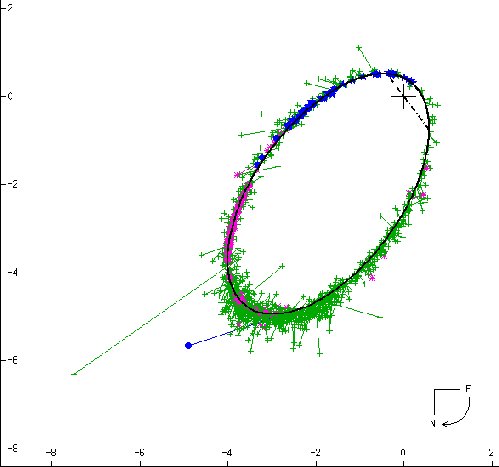
 |
The near-twin class F0 stars of Porrima (Gamma Virginis) go around each other every 169 years. In spite of the long interval, we've seen the full orbit. Here, for ease of visualization, the slightly dimmer one is charted as if it goes around the slightly brighter one (Porrima A), though in reality both go around a common center of mass. The scale on the axes is in seconds of arc. Separated on the average by 43 Astronomical Units, a high eccentricity takes the two between 81 and 5 AU apart. They were last closest in 2005. An orbital tilt of 31 degrees to the plane of the sky distorts the orbit and places Porrima A off the orbital focus. (W. I. Hartkopf and B. D. Mason, Sixth Catalog of Orbits of Visual Binary Stars, US Naval Observatory Double Star Catalog, 2006.) |